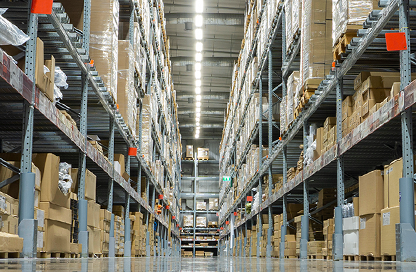With the right driver management program, you get improved safety and better long-term driver retention. But you can also see those benefits with the right fleet maintenance management program.
Same destination, but different routes.
It’s not that maintenance is somehow a replacement for driver management, and managers of fleets of all sizes can benefit from both driver and maintenance management systems. It’s not a question of one or the other. Instead, it’s important to understand the ways good maintenance makes driver management easier.
What are the connections between driver management, fleet maintenance, and safety?
With traditional driver management software tied in to GPS and dashcams, the idea is that because you can closely monitor how drivers are behaving on the road, you can more effectively incentivize safe driving habits. Basically, once someone is always watching, drivers are always on their best, most law-abiding behavior.
Fleet maintenance management software helps you reach the same goals but using a different route. One way to think about maintenance is as a way to protect your organization’s bottom line. When you find and fix small issues before they have a chance to develop into expensive repairs, you save time and money. But that’s just one of the benefits.
Proper maintenance protects more than just your vehicles. It also protects your drivers and everyone else on the road. When an engine loses oil pressure and the driver has to pull over for repairs, that’s one thing. But when a tire blows out or the brakes stop working, there are very real risks. And even something as small as a malfunctioning indicator light can be the start of a catastrophic chain reaction.
If your goal is to have drivers drive safely, you need to provide safe vehicles, and maintenance helps you do it.
How does maintenance management improve driver retention?
With traditional driver management software, the argument is that you can “gamify” safety by assigning scores and having the drivers compete for various rewards. The idea is that drivers feel like the organization sees and appreciates their hard work and attention to safety. Because they feel valued, they’re happy, so they stay with the fleet.
You can get some of the same results with fleet maintenance management software. So, although pay is always an important part of the equation, it’s a more complicated calculation. For example, drivers often look at how good a fleet manager is at keeping them on the road. The fewer hassles and hiccups, the more likely a driver is to stay with an organization.
Less time on paperwork means more time on the road
Government agencies are the ones dictating the types and timing of inspections, but there’s no reason why you should be asking drivers to use manual methods for their mandated inspections, tasks, and reports. When they have to do everything on paper, the process is slow and tedious.
By adopting modern software solutions, you can make safety checklists faster and more accurately. For the driver, there’s the immediate benefit of being able to get through the required work faster. And there’s also an added benefit down the line. Because the data they’re capturing is likely to be more accurate, the fleet as a whole is that much safer and more reliable.
Drivers are happier because they’re able to get in their maximum allowable hours on the road without feeling like you’re making the day unnecessarily longer with tedious paperwork.
Less time on the side of the road means more time at home
Adopting modern software helps with some of the tedious hassles of being a driver. But drivers care about the hiccups, too. Specifically, anything those unexpected schedule changes that keep them away from home and family.
When your fleet has problems with maintenance, it quickly develops problems with reliability. Vehicles break down more often than they should, and the repairs take longer than anyone would want. Instead of, for example, scheduled oil changes at the garage between deliveries, you have seized engines on the side of the highway right in the middle of runs. A delivery that should have taken three hours now takes 10, throwing off the overall schedule, and pushing drivers out onto the road when they were originally scheduled to be off.
And for a lot of drivers, time off means time with their families. When schedules change unexpectedly, you’re pulling people away from the ones they love.
That sounds dramatic, and it is. But it’s also true, and if you want to retain drivers, you have to offer a work-life balance that is not only fair but also predictable.
How does fleet maintenance management software help?
The right fleet maintenance management software delivers faster inspections and more reliable vehicles, more predictable schedules. A lot of it comes from just how much better a modern solution is than paper or spreadsheets.
With paper-based inspections, there’s a hard limit to how effectively drivers can work. If they find a problem, they have to carefully write it down, all while outside exposed to the elements. Even if the data they capture is accurate and complete, they’re responsible for making sure it doesn’t get lost before they can turn it in.
Digital driver vehicle inspection reports (DVIR), though, helps drivers work faster, better. Because everything is on their mobile device, they can quickly take and upload pictures instead of having to try to write explanation of problems. And because the software delivers the data to the fleet manager in real time, drivers don’t have to worry about losing scraps of paper.
The right fleet maintenance software also helps fleet managers make the move from unpredictable reactive maintenance to scheduled preventive maintenance. You can use the software to set up and schedule all your tasks and inspections, prioritize your backlog, assign PMs packed with instructions and checklists, and then track the work to completion. Because all the data lives on one central database, you have everything in the same spot, right where you need it. And unlike with a loose collection of separate spreadsheets, now all your data is connected.
So, for example, when a tech closes out a work order, the software automatically updates the inventory numbers for the associated parts and materials. And when inventory hits the par levels you customized, the software lets you know it’s time to arrange an order.
Next steps
To find out how EAM software can support your goals, schedule a demo of ManagerPlus Lightning today.
Summary
Driver management systems help fleet managers increase safety and improve driver retention. With GSP and dashcams, for example, drivers are more likely to follow safety procedures, and managers can more easily create reward systems for safety that help drivers feel appreciated. These programs and the software that makes them possible are important tools for fleet managers, but it is possible to see some of the same results with modern fleet maintenance management software. It’s not that one replaces the other. Instead, they are complementary.
Modernizing your fleet maintenance means moving from paper to digital pre- and post-drive inspections. Now, drivers can complete this work not only faster but also more accurately. And the data they capture goes straight to the fleet manager in real time, which means drivers don’t have to worry about collecting and protecting scraps of paper. Going digital and mobile also means fleet managers can more easily schedule and track preventive maintenance inspections and tasks, creating a more reliable fleet overall. For drivers, that means having more predictable schedules, helping them strike a better work-life balance.




